
Seems like a good week to write a sort of short part two to the Landscape of Punishment post.
And one of the reasons is the ongoing coverage of the Edward Snowden asylum search. I think that as one watches the TV news, or reads and watches it on the mainstream internet sites now, it is difficult to avoid seeing the strings of the puppeteer at work. The narrative is being spun out of whole cloth…total invention if neccessary. In the US in particular, the news is presented in simple narrative form, like a simple children’s story. The ‘tone’ is childish, the graphics simple and, yes, childish, too. Life is a cartoon. We will see the cartoon plane as it is projected to fly from one cartoony looking place on a map, to another. Now, this is all going to counterweighted with the mock serious tones of the aging white men who assume positions of expertise on these things. There is constant slight of hand that directs attention away from the NSA and US government, and toward the personal, focusing on Snowden’s life, his looks, his girlfriend, anything but what is in those leaks and how the US government lied about it. The same treatment is given to the Bradley Manning trial — the SECRET Bradley Manning trial. The coverage of Snowden (which becomes a soap opera, and therefore easier to spin and package than the actual NSA spy story) is given the same framing as a Kim Kardashian story, or any other celebrity gossip — Snowden and Manning are being packaged as political celebs.
The US police state has reached a point where it can, and really must, create its own “war zones”. Now that the landscape is normalized to the site of tanks and armored humvees, to SWAT teams and hi teach weapons, all that is missing is a reliable war zone. http://www.tomdispatch.com/blog/175723/tomgram:_todd_miller,_surveillance_surge_on_the_border
“After all, the bill would come close to doubling the number of Border Patrol agents, bringing their ranks to 40,000 — the size of a small army — stationed, according to Senator Lindsey Graham, every 1,000 feet along the nearly 2,000-mile border. To put that in perspective, the Border Patrol, created in 1924, took close to 70 years to reach 4,000 agents. In 2006, at 10,000 agents, it had its first major hiring surge, doubling its numbers. Many of the new agents were veterans from our wars in Iraq and Afghanistan. This new surge will mean collateral benefits for all sorts of businesses — more uniforms, more guns, more vehicles, more maintenance. And that’s just to scratch the surface of what’s likely to happen.”
Todd Miller
The US populace is being fenced IN, not out. Enclosure is literal and metaphorical. There is already a *virtual wall* along the border with Mexico, and one can expect such ‘walls’ along borders everywhere. Gated inside, and the wild boys outside.
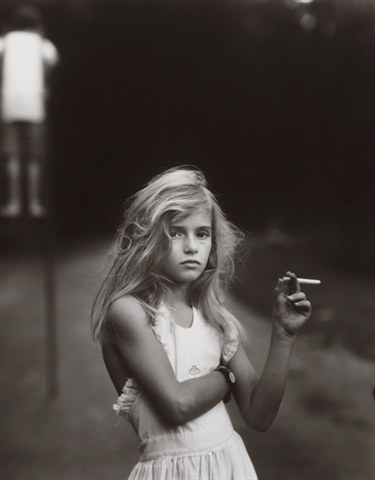
There are two other stories: one has to do with art (sic) and one is linked to the prison complex.
Part two of the piece on Cultural Hegemony has appeared at The Monthly Review.
Stanley Aronowitz…speaking of C.Wright Mills…
“Mill’s invocation of the cultural apparatus…signaled that culture was no longer the spontaneous creation of the people but instead was an aspect of the organization and reproduction of social and political domination. If social transformation was at all possible, its protagonists were obliged to understand the process of production and distribution of key cultural forms, especially the mass media. Clearly, the implication of his projected study was to argue for a new counterhegemonic strategy of the Left that matched the force of the culture industry.”
This ties directly to what I was attempting to articulate last blog post. I see no counter hegemonic strategy, in fact what I see on the left is an avid pop fan culture and the presentation of self that is tailored to media needs and a media savy and comfortable audience. In that MR piece, Mills addresses the question of the cultural producers being cut off from their public. This has become a strange and distorted sort of fun house mirror of questions and partial answers. Indeed, the hegemonic control of distribution is the central fact of electronic media today. First came the creation of a “mass audience” per se, and then the corporate creation of mass consumer advocates and finally the mass cultural product.
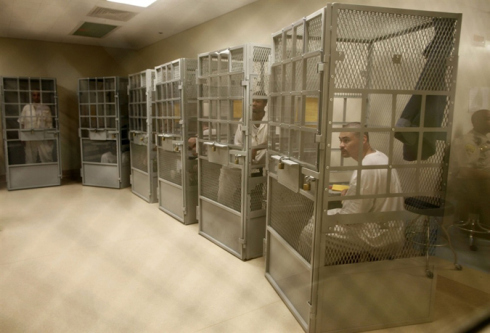
Ad-seg prisoners, in group therapy session, San Quentin
The need, then, is to create a left or dissident cultural apparatus. And this is not a simple project at all. For it must be, if it is going to be based on anti capitalist sentiments, on anti Imperialist values, on socialism in some sense, on anarchism in another, then it cannot be a kitsch version of these things….for really, Hollywood already has that. Art does not function like a business, in the sense that the autonomy of creation is not, ideally, linked to manipulation or conscious ideological agendas. These facts make it a bit harder to find a strategy for countering the prevailing system of cultural domination and unfreedom.

Given the hegemonic position of mass media, the small autonomous cultural efforts that are in fact off the grid (as it were, even if not literally so) have thus far (in the US anyway) been doomed to a sort of amateur and undisciplined set of projects that are distanced from both history and the greater society. Its just bad art, usually, but when not amateurish, it is somehow embued with the qualities of failure that are the hallmark of conscious detachement from society. The difficulty of any material resistance has simply meant that cultural issues are given secondary importance. There is the reality that small community level organizations can develop a clear identity (on the left and the right), and achieve specific sorts of material reform, at least in proscribed areas, while simultaneously, when dealing with aesthetics, suspend the consciousness that created these social changes in other areas.
So that its not surprising to see community organizations (at least a lot of left or left liberal) screening repeatedly the same set of “left approved” Ken Loach or John Sayles films, or various documentaries. There may be nothing quite so depressing in fact as sitting in a community center watching Matewan and sipping organic apple cider from recycled paper cups. The lack of aesthetic self awareness that comes with this stuff is stunning.
My experience has been, those centers DONT screen films that don’t have an overt connection to politics. There is no interest in extracting a political meaning from artworks not self identified as political. Form is not seen as radical, only content. Rigor is not applied to aesthetics. By extension, then, rigorous criticism also can fail at the level of communication systems, for those monolithic corporate giants, working closely with the Pentagon (and other related corporations in defense) are not taken seriously, are not analysed as important mechanisms in the exercise of state control.
Now, I am generalizing but I don’t think I’m wrong.
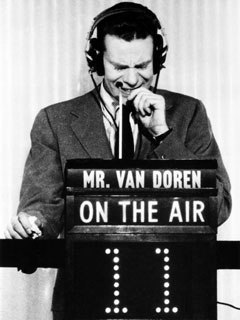
Part of the enclosure of discourse is to focus on individual psychology, and problems, and to privilege the idea of individual redemption or sacrifice. As was said above in another way, the broader the perspective of an artwork, the wider and longer the historical overview, the quicker the work is eliminated. To question the very idea of creating a mass audience is to be seen as dangerous. To view cultural life, or really, all life, in its totality — is simply forbidden. It’s bad for business. One sees just how correct Century of the Self actually is. The Edward Bernays century. So, a historical drama, is always focused on an individual caught (sort of accidentally) in the forces of history.
The culture industry sells the system in a sense by being the system.
And perhaps more than any other part of its ideological architecture, the marketing and branding of the cultural apparatus LIMITS the historical point of view of its audience. I would even say the primary training of the audience is in amnesia.
The second lesson of capitalism (in the cultural apparatus) is that of enforcing reification. That as Lukacs put it ““that a relation between people takes on the character of a thing and thus acquires ‘phantom objectivity…”. That’s the key, the phantom objectivity, because it allows that objectivity (which is mystified) to further penetrate the daily life of people. Coupled to amnesia, the ‘present’ takes on an enhanced sense of “real”….the “reality effect”, which is reproduced constantly in TV and advertisments…and today, in everyday encounters.
The idea of the creation of false needs and desires (mostly via the Frankfurt School) was given a lot of criticism in the 70s by guys like Stuart Hall. (“it assumes that “vast numbers of ordinary people, mentally equipped in much the same way as you or I, can simply be thoroughly and
systematically duped into misrecognizing entirely where their real interests lie”). Yes, Stuart, that’s correct.
But there is a point here where this cultural apparatus became the new social media/internet model of capital.There is a huge amount of writing on this topic now, but its clear that those using platforms like Facebook, and Twitter, etc, are generating value for the owners of those platforms. Now, the exact nature of this labor, or “playbor”, and the definitions of exploitation that one may come up with, or for defining capital accumulation, and the various adjustments to classical Marxist theory, may all be yet debated, but one thing is I think clear, and that is that intersecting this now is the state surveillance apparatus.
Any notion that somehow these commercial social media platforms are creative participatory and democratic is just delusional. However, what they can be, potentially, used for is the creation of counter hegemonic models of culture. They can be counter exploited as tools.
“Eros has become fully subsumed
under the repressive reality principle. Play is largely commodified, spaces and free time that are not
exploited by capital hardly exist today. They are difficult to create and to defend. Play is today productive,
surplus value generating labour that is exploited by capital. All human activities, and therefore
also all play, tends under the contemporary conditions to become subsumed under and exploited
by capital. Play as an expression of Eros is thereby destroyed, human freedom and human
capacities are crippled.”
Christian Fuchs

Camp Cropper, Baghdad
Remember too…as Fuchs says….
“iPhones, iPads, iMacs, Nokia phones etc are “blood phones”, “blood pads” and “blood Macs”:
Many smartphones, laptops, digital cameras, mp3 players, etc are made out of minerals (e.g. cassiterite,
wolframite, coltan, gold, tungsten, tantalum, tin) that are extracted under slave-like conditions
from mines in the Democratic Republic of Congo and other countries. The existence of the
Internet in its current dominant capitalist form is based on various forms of labour: the relatively
highly paid wage work of software engineers and low-paid proletarianized workers in Internet companies,
the unpaid labour of users, the highly exploited bloody Taylorist work and slave work in
developing countries producing hardware and extracting “conflict minerals”. Arvidsson’s approach
implies that unpaid Congolese slave workers that extract the material foundations of ICTs are not
exploited, which has problematic implications.
Arvidsson’s alternative to the labour theory”
(for more on this read Keith Harmon Snow, at his web-site here http://www.consciousbeingalliance.com/ )
 I wanted to briefly touch on a new TV show that serves as a useful introduction to the new landscape of punishment. Ray Donovan, is a sort of cross between Entourage and The Town. The problem is that nothing in this show has the slightest feel of authenticity about it. None of it, not a second. It has recieved a big PR push from the network, and is hoping to fill the void left by The Sopranos (and Gandolfini’s death) and the winding down of Mad Men. The only reason I really bring up this show is that the lead character is a descendent of King Rat and J.J. Sefton in Stalag 17. The fixer, the man who takes care of rich people’s problems, or works with the power structure. Now, once upon a time, as Billy Wilder was acutely aware, such ammoral opportunistic characters were placed at the bottom of the moral food chain just above child molesters, bankers, and snitches. Today, we have a Showtime series. The fetishizing of South Boston accents is now actually inching into the bizarre. Perhaps these are the signifiers for authentic, (if white anyway). The curious thing in this show, every single aspect of which is wrong and tone deaf, is that there is not even any attempt made to redeem the absolute sleeziness of the lead character. In fact, so unappealing is the Leiv Schreiber protagonist, that another character has to actually say about him…”He’s hot, isn’t he?”. The rhetorical question is voiced by a nerdy self parody Hollywood producer which again, demonstrates the deep self loathing of Hollywood executives. The only people Hollywood executives hate more than themselves, is everyone else. The question…feels SCREAMED…..the show is screaming HE’S HOT ISNT HE????? in the desperate hope that a resounding chorus of affirmatives “yes’s” will burst forth in answer.
I wanted to briefly touch on a new TV show that serves as a useful introduction to the new landscape of punishment. Ray Donovan, is a sort of cross between Entourage and The Town. The problem is that nothing in this show has the slightest feel of authenticity about it. None of it, not a second. It has recieved a big PR push from the network, and is hoping to fill the void left by The Sopranos (and Gandolfini’s death) and the winding down of Mad Men. The only reason I really bring up this show is that the lead character is a descendent of King Rat and J.J. Sefton in Stalag 17. The fixer, the man who takes care of rich people’s problems, or works with the power structure. Now, once upon a time, as Billy Wilder was acutely aware, such ammoral opportunistic characters were placed at the bottom of the moral food chain just above child molesters, bankers, and snitches. Today, we have a Showtime series. The fetishizing of South Boston accents is now actually inching into the bizarre. Perhaps these are the signifiers for authentic, (if white anyway). The curious thing in this show, every single aspect of which is wrong and tone deaf, is that there is not even any attempt made to redeem the absolute sleeziness of the lead character. In fact, so unappealing is the Leiv Schreiber protagonist, that another character has to actually say about him…”He’s hot, isn’t he?”. The rhetorical question is voiced by a nerdy self parody Hollywood producer which again, demonstrates the deep self loathing of Hollywood executives. The only people Hollywood executives hate more than themselves, is everyone else. The question…feels SCREAMED…..the show is screaming HE’S HOT ISNT HE????? in the desperate hope that a resounding chorus of affirmatives “yes’s” will burst forth in answer.
In the pilot, ‘Ray’ beats a man to death with a baseball bat while he lays helpless on the floor. Hot, no?
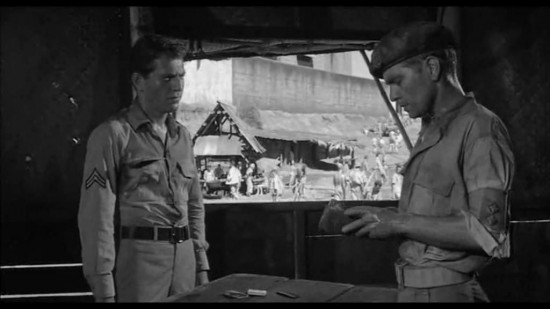
King Rat, Dr Bryan Forbes, 1965
It is interesting to consider the inspection of scapegoating, suspicion, and fascism that is present in Stalag 17, and in King Rat, both, and then look at the moral vacuuity of something like Ray Donovan. The culture of punishment, the landscape of punishment seems to be expressed aesthetically through the creation of endless characters who possess a capacity for random unstable violence. Often professionalized, often uniformed, but always excessive. Compare the characters I referenced last post..:Capt Ahab or Judge Holden, that exist in morally complex universes connected at their origin to historical socio-political forces. The new violence porn simply trots out this season’s accent du jour, adds a few fetishized details of working class life (boxing gym, father just released from prison, etc) and stir, let cool, and serve. This continues the tradition of seeing in the underclass something of special virility or sensuality, akin to the noble savage or Mandingo. In fact, Ray himself is a sort of white Mandingo. The working class (signified by Southie accents and boxing gyms) are treated as repositories of authenticity, while “fake” Hollywood is ridiculed as superficial and venal. Still, in the end, Ray works for the Man, takes orders from The Man, and cravenly does his bidding. And, the class dynamic is normalized, imprinted as natural and inevitable. Nobody would ever ask, why is this social hierarchy the way it is?

Ray Donovan, 2013, Showtime
But wait….in episode two, Ray shows his humanity by giving a young pre-op trannie money for her gender reassignment operation. What a guy. Salt of the earth. This bit of sentimental aside to the actual narrative seems a reaction to what have probably been some concerns that Ray isn’t very likable. Ya think? Well, the even more interesting trope here, as is often the case, is the fallback belief and validation of the family. Ray has a loving “authentic” working class wife, two very attractive kids, and of course “he wants to do anything to protect them” — except, you know, find a line of work where he’s not maiming and killing people.
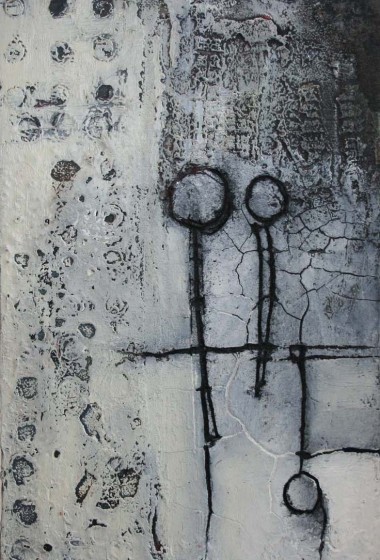
Finally, I wanted to mention a couple other items. One of my favorite journalists and writers is Bruce Jackson. Bruce wrote what is still one of the best books on criminals ever written in the U.S., called “In the Life”. It may now be out of print, but its a stunningly simple and profound book, and well worth searching out. He has wriiten a short piece published by Counterpunch on the execution of a single prisoner, and like all of Jackson’s work, the depth of the piece is presented in simple and clear writing. Jackson never sentimentalizes or sensationalizes.
http://www.counterpunch.org/2013/07/09/dth/
The bureaucracy of death, the death professionals, the doctors and the prosecutors and the judges. The guards, the entire vast system of punishment remains so banal and muncipal feeling. Forms, regulations, certificates, and all done with what is believed to be efficiency.
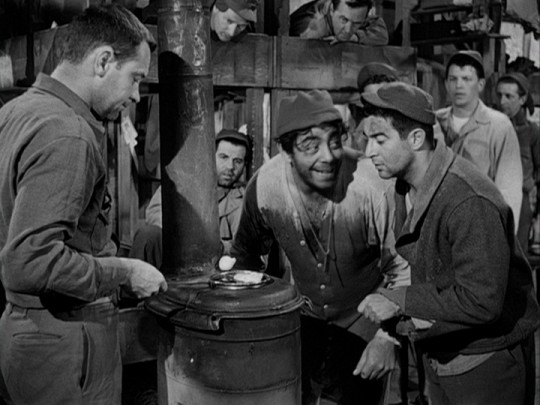
Stalag 17, Dr. Billy Wilder, 1953
There is never any efficiency in death. In state murder. Not ever. A sort of coda to all this is to remind us again, as the NSA leaks continue to give context…that the US still has Guantanamo Bay open, and a host of other similar sites that nobody ever mentions. In the society of Enlightenment science, in the ever great technocratic saturation of daily life, and of course the *constant* surveillance, which includes any purchase one makes with a credit card, any phone call and even any search engine queries — establishes where you are, and where you’ve just been. The seemingly endless number of sociological studies in the field of Penal Sciences can best be summed up with the 1974 article by Robert Martinson, “What Works? Questions and Answers about Penal Reform”, which arrived at the conclusion; “nothing works”. This was the perfect diagnosis for an era in which Viet Nam and civil rights, had disrupted the assumed stability of American life. The rise in crime, or the perception of it…and the counter culture movements, all came together in an easy recipe for punishment…..’nothing works’.
I remember when stunningly high numbers of soldiers returned from Viet Nam with heavy opiate habits, that the public response, led by Richard Nixon, was to look for ‘cures’. In penology, Martinson allowed their were no cures. No single national politician since then has been able to run a campaign without a clear “tough on crime” platform. This was that moment of white backlash at civil rights, it was post Viet Nam psychic trauma, especially for white males, the collective loss of potency — all then shot through a lens of PUNISHMENT. Suddenly, since ‘nothing works’, lets not waste our time (and compassion) on rehabilitation. Like those returning Vets with opiate dependency—nobody any longer wanted to discuss social causes. The inclination for punishment was there just waiting, anyway. In a nation founded on genocide and slavary and puritanism, it was never likely going to view penal issues with anything like nuance or reason.
The perceived failures of the Great Society, the cultural chaos (perceived) of the counter-culture, the civil rights movement, and all the while Capital was financializing gradually, and the Pentagon and State Department were coming to more and more rely on PR and marketing, and ruling class owners of big corporate interests saw the need to consolidate and circle the wagons. In this landscape criminology simply took a turn toward a science of resentment, to the formation of an apparatus into which society could feed all its resentments and confusion, and its surplus population.
“…the sociology of punishment has proven the prison is structurally predisposed to creating tensions and hierarchies that will always fundamentally distort efforts to create healthy patterns of decision making and will always divest, rather than invest, individuals with social skills and capital.”
Michelle Brown
So, today, the final stages of this logic have been reached. The prison population is greater than any nation on earth, and the new Super Max joints (like Pelican Bay in California, or Tamms in Illinois, or hybrids like Corcoran in California, and one Federal joint, ADX in Florence, Colorado. These are the last stop on the punishment bus route. This is what you end up with.

My own experience with the justice system and courts (and believe me I was fortunate to find several good and principled people during my decade of interaction) is reflected on an emotional level by looking at the failed landscape of the US. To drive across the US today is to see small towns, and even small cities, that have been bypassed economically, made irrelevant — as both reality and metaphor. And nobody could argue with these moves, for they were in the name of efficiency and progress. As the economics of small town America continued to force urban migration, the greater loss was in local culture, in local radio and food and customs. To drive into small towns today is to be met with the emotional blankness of a dissociative personality. The cultural ecology has been destroyed. The depression stares back at you.

What is the effect of a society that increasingly incarcerates its own population? In which no punishment is too harsh. In which one’s own government openly lies and few people care— how does that effect the greater cultural landscape? The loss of regional food culture, of small farms, and the simply blanket corporate selling of highly processed junk food has to effect the landscape. The architecture, the language and all narratives. The lack of meaningful work, the psychological distance from your labor, the loss of cooperation, a luxury in a highly cutthroat and competitive jobs market (for almost exclusively a minimum wage labor of humiliation). All the stories people tell each other, and DONT tell each other, are what shape the faces and bodies and gestures of a society. The government and its organs of punishment, today,..the police and military, they torture, abuse, lie, and punish the innocent. They are their own law. The individual’s retreat into private worlds of psychic segregation is simply logical. Adaptive. Corporate logic is Capitalist logic and its carceral and without pity. Without compassion. Everything is endowed with a quality of the punitive.
And as a sort of coda to punishment and its interelationship with education and culture….there is this
http://www.latimes.com/local/lanow/la-me-ln-uc-president-20130712,0,83979.story
There is a hunger strike now in California Prisons.
I think its important to support this strike. For within these walls, along with the psychopaths and sociopaths, are also, in a clear majority, the most humane and the least indoctrinated, and often most brave of our society. These are also the demonized poor, for the rich don’t land in jail.
http://prisonerhungerstrikesolidarity.wordpress.com/

Youth offenders, Steve Davis, photography
* Top photo is also by the excellent Steve Davis.

I had this adware that somehow ended up on my computer. It must have just automatically installed itself on my machine after I visited a certain site, but the point is I spent the entire afternoon using multiple virus protection programs to delete this thing from my computer, but the more I forced it off my HD automatically the more intransigent it seemed until I eventually had to figure out a tedious way of removing it manually. The adware must have had some built-in feature that blocked the efforts of virus protection. I eventually deleted it or at least it seems that way, but it just goes to show the lengths people are willing to go to in order to infringe on one’s personal privacy. I think computer security would be a good topic for you to touch on. That thing could have been tracking my every move for all I know, and who knows who the progenitor is. I’d rather not know.
I watched the introductory episode a few weeks ago and I thought in fact the lead character was deeply disturbed and corrupt. I felt like the series was not going to try to make him either hot or heroic and that maybe there was even an effort at poking at the moral corruption of both those from South Boston and the gang mentality, police and Hollywood like one sees in the gangster turned movie star, Mark Wahlberg. So what would be interesting for me, John, is why I read it so differently than you did. What did I miss? What visual cues did I not see in that first episode? I have not watched it since incidentally.
@remy,
I have an IT guy handle this site. Im not a computer sophisticate. I know a bit but cant speak on it. I know that trolls bombard this site with spam though.
@joanna:
Im not sure what to say beyond what the article says. Look, there is an ideological backdrop to everything. But its quite clear when looking at network and studio work. You HAVE to read that backdrop, To not read it means one is reacting to a commerical, essentially.- For example, you can watch a movie like Avatar for example…..you could see a tale that says oh corrupt corporations ruin things,think its a liberall film, sort of progressive……admiring of indigenous peoples…..OR you could read it by starting with the ideological backdrop. Militarism, racism, and see who the hero is…..and see really what the hierarchal relations are….which neutralize and negate the top text. So that in fact its an imperialist drama of conquest, of white power…the *right* white power inhereting the resources and wealth…and that the Nav are stereotyped orientalist depictions straight out of Lord Kitchner’s bad dreams.
The auteur rreading in a sense, is that Cameron sees the world as there for his pleasure. Shows contempt for studio bosses who dont worhsip him, and cripple his genius…while at the same sharing their basic value system.
SO in Ray Donovan…………there is an ideological backdrop………..i mean oh, its poking at corruption. Sure…sure it is………..but its suggesting that this corruption is the fault of those in south boston who turned to crime and those in hollywood who are shallow. Its not the system that creates these things……..these conditions. And its all stuff that Ray will ….as white man……masculine, desirable……”cool”…..hyper violent…..psychotic actually………….that he will do battle with. You know, Ive spent a fair amount of my life in boxing gyms….and my son trained with an old south boston guy….and i loved those people, and i saw them as victims of their poverty. One said to me once….and he had fought for the lightweight title once……he said “I hate fighting. I hate getting hit. I did it because I couldnt think of anything else that would pay as well”.
Thanks for letting us know about Steve Davis photography. For those interested, more can be found at stevedavisphotography.com. definitely worth a visit.
Yeah I see what you are saying. I was very disturbed by Ray Donovan character killing that man because he was stalking a woman that he himself wanted. I hoped they were going to show his downfall, morally and psychically. But I also see now how the larger socio-economic corruption of a capitalist society that creates an us/them schism of elitist power structures is not dealt with at all. I see that is missing in almost all TV/crime shows…well in all TV actually. Which makes sense since it is corporations that create these things. Deadwood was a show that I think tried to show the rot at the heart of American society but maybe I am wrong about that.
I have to agree with John here. It’s a repeated device used in corporate entertainment: reducing corruption to the apolitical, that is to say, reducing those problems to “personal” problems.
I did watch the next 2 episodes of Ray Donovan last night. They were odious. It is not authentic at all and I am surprised I did not see that in the first episode. I suppose I am hungry for an American drama that reflects true working class people from the Northeast and shows them with dignity and actual day to day struggles. How naive and foolish of me to want a corporate driven Showtime series to be about something real.
@george:
yes, steven davis, among the best photographers working I think. trevor Paglin, Alec Soth….i mean there are slightly older guys, lewis baltz….but Davis is just exceptional.
Here is a link that works, I hope.
http://stevedavisphotography.com/
and i guess its STEVE davis, not steven. Sorry.
TYhere is SO SO much here I want to respond to I am choosing to start, kind of arbitrarily – with the section above from century of self through hall to fuchs
This individualism we find here is propagandistic in the vein of the original capitalist vision, the robinsonades of political economy
the encouragement to experience and understand in anecdotes that are limitted to the synchronic aspect, prohibiting history, peak in structuralisms – especially the pseudoscientific ones of Lacan in psychology and Barthes in literary analysis.
I think this individualism is really the fundamental bnrainwashing necessary, and we see as long as people are trapped in this perspective (and youth increasingly are), any content can be thrown at them it doesnt matter. If it’s revolutionary it bounces off the heat shields of this individualism?. It can’t DO anything. It can’t be absorbed because the historical consciousness is impossible It can be “entertained” as thought experiment but not really accepted.
The prison becomes this setting of these fables, like the marketplace.
@molly:
yeah, boy, this is such an important comment. And its really what a number of people are writing about….brad evans is, Giroux in very different way. I of course disagree about Lacan, but I do think he lent himself to this sort of abuse and mis-reading. and that is his flaw and its significant. But, he also was saying important things, its just hard at this point to climb up out of the hole of “lacanians” (zizek in particular) who have sort of just completely co-opted him and turned it into part of their babble. And even barthes was good in places. Baudrillard was too. But the whole intellectual impetus of this project is problematic and its becoming more and more apparent.
The encouragement to experience in anecdotes. YES…..yes, and not just anecdotes, but from a very narrow subject position that is manufactured. Its not based on lived experience. The trayvon martin fall out, from the verdict, has been extremely revealing. The new hipster snark racism. The expression of a pop mentality that is grounded in media, in pop culture , in TV shows and movies, has now become like a *lifestyle* choice that includes moral and ethical issues as well as broadly political. Its white people. its privileged white people. The facts of a white criminal justice system, of white lawyers and judges etc….all of this is subsumed by these anecdotal asides, always couched in this subjective stance that isnt real. Its not based on anything besides TV. The sense of real violence is absent. Its replaced by TV violence. And its set against an ideological backdrop of white supremicism. It is now unquestioned. So george zimmerman is “hispanic” and its a gun control problem. Any attempt to explain that, say, hispanic is problematic , and that of course its about racism, About white fear of black people, just evaporates because that would entail an examination of history, for openers. Thats all gone. As I said, maybe last time….the fundamental teaching of this system is in amnesia.
I like much of Barthes too by the way but the structuralist stuff is bogus – the Fashion System is simply bogus, its like this childish estrangement posture, like a feigned Martian pov on historical social product.
But that is the point – the disabling of the consciousness of causality, of probabilities, of history – this is how people are made helpless.
The eruption of all this racism, this hipster racism that sounds so confident, so assured, so assumed, is traumatic, I don’t know how people of color are able to stand it – and it now confirms all the coded stuff, the innuendo, the allusive stuff of the past decade for what it is. All that is exposed finally starkly as the euphemism and the encrypted (and so preserved from criticism) white supremacist formulae we knew it was (and were gaslighted about all this time…)
The arrogance of the white and wealthy – the rich being richer than ever, and surrounded by desperation so that the rich white folks feel at home in the US the way they and the British felt abroad in the colonies, tossing pennies at rickshaw drivers – is unleashed in every aspect of their cultural production. Lena Dunham’s nakedness is the nakedness of the White Lord Of All in front of servants, beings whose regard need cause no my shyness in her than the regard of pets or insects. That fling about “Precious” one of the show’s writers made on twitter expresses the attitude – these are people who consider themselves a superior species.
@molly:
it reminds me of martin amis when he wrote about Muslims. The tone of the old colonial men’s lounge of the Raj. Its the return of the repressed in a sense….those feelings of superiority and contempt that were surpressed over fifty years…….the anxiety under that, and this pathological self loathing that is directed at the other. Those they believe should be servants and maids. I continue to see this expressed in media…..in this hipster racism….the sense that black people ARE uppity. The embrace of irony (cool reagan tropes etc) that masks what is primary and essential — and foundational. A hatred for workers and the poor. GIRLS is a show about how white people shouldnt ‘have’ to work. I keep seeing how irony has become this narrative mechanism almost directly connected to white surpremicism.
ALongside this I think is this identification with the aggressor, with a valorized violence. White men with guns. And white men with guns are in the service of colonial rule. You know, colonial imagery never left marketing. Everyghing from Old Spice to brands of pipe tobacco i remember….images of colonial traders, trading ships, british rule ……you see it in cartoons and children’s literature a lot, too. Pinces and princesses, these white fairy tales (not actual fairy tales, not Grimms, but modern ones written in this colonial *style*) and in film a lot, too. The orientalist construction of “romance”……its pure colonial era style codes. I think those feelings survived there to resurface first as ironic style, and then as narrative. Suddenly, this vast huge apparatus of white supremicism is being starkly revealed. And those like zimmerman toiling in the service of his identifications, as a gunslinger vigilante, a bounty hunter, a scalp hunter, really.
John, when you write “To drive into small towns today is to be met with the emotional blankness of a dissociative personality” you couldn’t be more right! As someone from Grants Pass, Oregon originally (age 2-18) (you can look it up) I felt this intensely. The banality and poverty of everything created a Self that couldn’t handle Itself and therefore became more enveloped within the dominate hegemonic media structures. My mother falls to sleep with FOX news on in her room with a TV, or watching ESPN with her partner from another small town in the Florida keys. There is a desperation amongst my siblings who are radical 20 and 18 years old, and they are yet still somehow unable to imagine leaving, let alone doing it. Being gay and sent away was actually an escape valve, in many senses being queer in a small town is sometimes a psychological and social ticket out.
Yes, I meant look up Grants Pass, OR, demographics, etc.